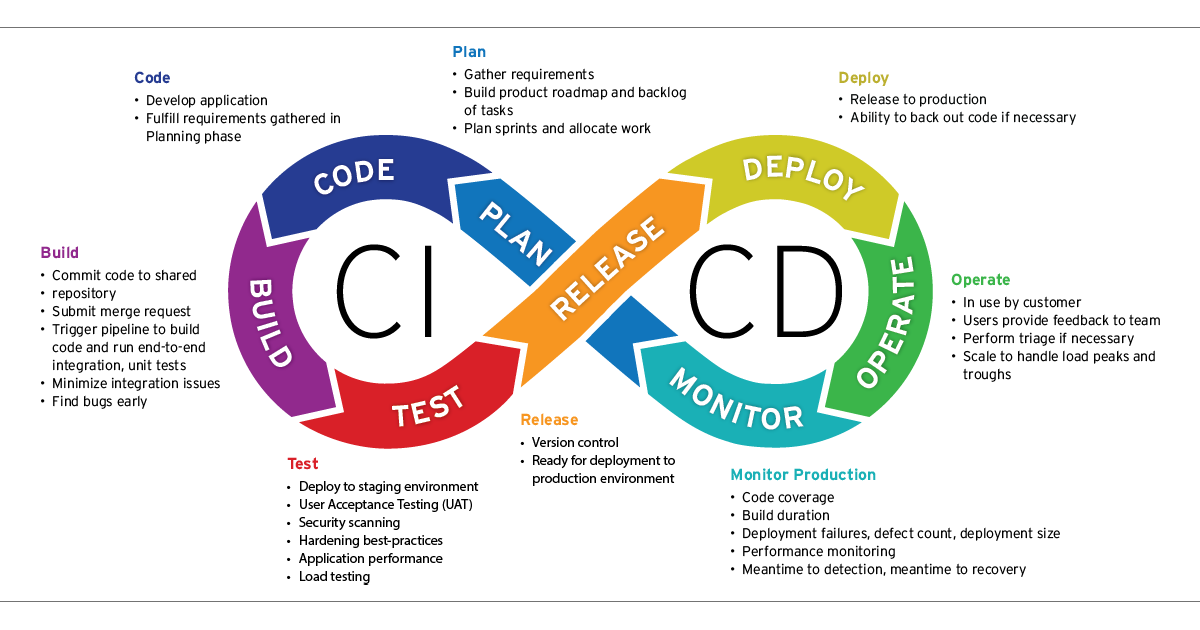Continuous Integration/Continuous Delivery (CI/CD) Pipeline
Article by DSoft Technology
Published on 23-01-2024
An important part of the development process is the use of a CI/CD pipeline. This is especially true when...
tags: CI/CD pipeline DevSecOps Quality Assurance
Share This Article
Continuous Integration/Continuous Delivery (CI/CD) Pipeline
An important part of the development process is the use of a CI/CD pipeline. This is especially true when using Agile methodology because functionality is built in increments and software in general is usually built in pieces or modules and stitched together. It is important to make sure all these pieces function well together.
By automating CI/CD through development, testing, production and monitoring phases of the software development lifecycle, organizations can develop higher quality code, faster and more securely. Although it’s possible to manually execute each of these steps of the CI/CD pipeline, the true value of the pipeline is realized through automation.
This pipeline is an important part of contemporary DevSecOps practices. A CI/CD pipeline is the glue that holds the functional experience together and is a workflow for getting code changes integrated into the software and implemented quickly. The pipeline process is used with a series of steps to ensure that code is not overwritten, code is stored properly, such as in GitHub, and checked out from the source correctly and that code is tested before moving through environments. Best practices dictate the use of a Development, Test or Staging and a Production environment - at a minimum. The use of standard quality assurance practices along with a CI/CD pipeline ensures defects are caught early and remediated, and that code is not moved until thoroughly tested. QA relies on a CI/CD pipeline for integration and system testing.